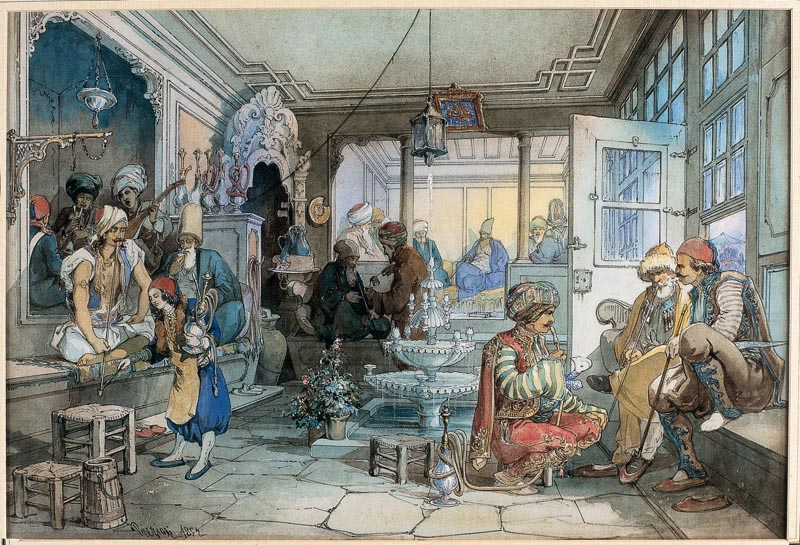[tube]DW91Ec4DYkU[/tube]
Italians are famous and infamous for their eloquent and vigorous hand gestures. Psychologist professor Isabella Poggi, of Roma Tre University, has cataloged about 250 hand gestures used by Italians in everyday conversation. The gestures are used to reinforce a simple statement or emotion or convey quite complex meaning. Italy would not be the same without them.
Our favorite hand gesture is fingers and thumb pinched in the form of a spire often used to mean “what on earth are you talking about?“; moving the hand slightly up and down while doing this adds emphasis and demands explanation.
For a visual lexicon of the most popular gestures jump here.
From the New York Times:
In the great open-air theater that is Rome, the characters talk with their hands as much as their mouths. While talking animatedly on their cellphones or smoking cigarettes or even while downshifting their tiny cars through rush-hour traffic, they gesticulate with enviably elegant coordination.
From the classic fingers pinched against the thumb that can mean “Whaddya want from me?” or “I wasn’t born yesterday” to a hand circled slowly, indicating “Whatever” or “That’ll be the day,” there is an eloquence to the Italian hand gesture. In a culture that prizes oratory, nothing deflates airy rhetoric more swiftly.
Some gestures are simple: the side of the hand against the belly means hungry; the index finger twisted into the cheek means something tastes good; and tapping one’s wrist is a universal sign for “hurry up.” But others are far more complex. They add an inflection — of fatalism, resignation, world-weariness — that is as much a part of the Italian experience as breathing.
Two open hands can ask a real question, “What’s happening?” But hands placed in prayer become a sort of supplication, a rhetorical question: “What do you expect me to do about it?” Ask when a Roman bus might arrive, and the universal answer is shrugged shoulders, an “ehh” that sounds like an engine turning over and two raised hands that say, “Only when Providence allows.”
To Italians, gesturing comes naturally. “You mean Americans don’t gesture? They talk like this?” asked Pasquale Guarrancino, a Roman taxi driver, freezing up and placing his arms flat against his sides. He had been sitting in his cab talking with a friend outside, each moving his hands in elaborate choreography. Asked to describe his favorite gesture, he said it was not fit for print.
In Italy, children and adolescents gesture. The elderly gesture. Some Italians joke that gesturing may even begin before birth. “In the ultrasound, I think the baby is saying, ‘Doctor, what do you want from me?’ ” said Laura Offeddu, a Roman and an elaborate gesticulator, as she pinched her fingers together and moved her hand up and down.
On a recent afternoon, two middle-aged men in elegant dark suits were deep in conversation outside the Giolitti ice cream parlor in downtown Rome, gesturing even as they held gelato in cones. One, who gave his name only as Alessandro, noted that younger people used a gesture that his generation did not: quotation marks to signify irony.
Sometimes gesturing can get out of hand. Last year, Italy’s highest court ruled that a man who inadvertently struck an 80-year-old woman while gesticulating in a piazza in the southern region Puglia was liable for civil damages. “The public street isn’t a living room,” the judges ruled, saying, “The habit of accompanying a conversation with gestures, while certainly licit, becomes illicit” in some contexts.
In 2008, Umberto Bossi, the colorful founder of the conservative Northern League, raised his middle finger during the singing of Italy’s national anthem. But prosecutors in Venice determined that the gesture, while obscene and the cause of widespread outrage, was not a crime.
Gestures have long been a part of Italy’s political spectacle. Former Prime Minister Silvio Berlusconi is a noted gesticulator. When he greeted President Obama and his wife, Michelle, at a meeting of the Group of 20 leaders in September 2009, he extended both hands, palms facing toward himself, and then pinched his fingers as he looked Mrs. Obama up and down — a gesture that might be interpreted as “va-va-voom.”
In contrast, Giulio Andreotti — Christian Democrat, seven-time prime minister and by far the most powerful politician of the Italian postwar era — was famous for keeping both hands clasped in front of him. The subtle, patient gesture functioned as a kind of deterrent, indicating the tremendous power he could deploy if he chose to.
Isabella Poggi, a professor of psychology at Roma Tre University and an expert on gestures, has identified around 250 gestures that Italians use in everyday conversation. “There are gestures expressing a threat or a wish or desperation or shame or pride,” she said. The only thing differentiating them from sign language is that they are used individually and lack a full syntax, Ms. Poggi added.
Far more than quaint folklore, gestures have a rich history. One theory holds that Italians developed them as an alternative form of communication during the centuries when they lived under foreign occupation — by Austria, France and Spain in the 14th through 19th centuries — as a way of communicating without their overlords understanding.
Another theory, advanced by Adam Kendon, the editor in chief of the journal Gesture, is that in overpopulated cities like Naples, gesturing became a way of competing, of marking one’s territory in a crowded arena. “To get attention, people gestured and used their whole bodies,” Ms. Poggi said, explaining the theory.
Read the entire article here.
Video courtesy of New York Times.


 The holidays approach, which for many means spending a more than usual amount of time with extended family and distant relatives. So, why talk face-to-face when you could text Great Uncle Aloysius instead?
The holidays approach, which for many means spending a more than usual amount of time with extended family and distant relatives. So, why talk face-to-face when you could text Great Uncle Aloysius instead?